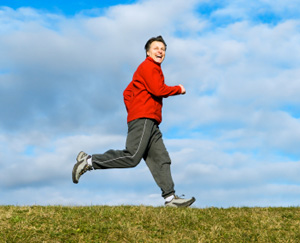Gluten Free
What does following a gluten-free diet mean? That you're embarking on an easy diet with a wide range of health-promoting effects. Instead of dwelling on what you’re giving up, consider that you’re going to enjoy a whole new world of delicious food options to meet your special dietary needs. You’ll be eating seasonally, choosing more fresh fruits and vegetables, focusing on meats, seafood, poultry, legumes, lentils, corn, and rice, and discovering fascinating ancient grains such as quinoa, amaranth, and millet. You’ll be able to eat potatoes, eggs, most cheeses, even chocolate (!)—and enjoy them without guilt because you’ll be taking good care of your body. In fact, you’ll probably end up eating—and feeling—better than ever!
Visit this page for more information about living Gluten Free
---
We carry a large variety of gluten free items, the brands listed below represent just some of the offerings we carry















More Diets
- By Kimberly Beauchamp, ND
Get Moving and Fiber Up to Lose That Spare Tire
Carrying extra pounds around the midsection can raise the risk of developing diabetes. But what makes fat accumulate there, instead of on your caboose? It turns out that certain dietary factors and exercise could predict fat distribution over the years.
For each 10-gram-per-day increase in soluble fiber, the rate of visceral fat accumulation went down by almost 4%. Exercise also helped keep visceral fat down over time.
An unhealthy apple
When it comes to disease risk, having an appleshape is less desirable than a pear shape, where fat is concentrated more around the thighs and buttocks. Extra abdominal fat—especially the stuff that surrounds the organs, called visceral fat—increases the risk of developing insulin resistance, which is a forerunner to diabetes. The fat that lies just below the skin’s surface (subcutaneous fat), doesn’t seem to be as strongly linked to diabetes risk.
In an effort to better understand what contributes to abdominal fat, researchers involved in the Insulin Resistance and Atherosclerosis Family Study (IRAS) asked 1,114 Hispanic Americans and African Americans (average age 42 years at the beginning of the study) about lifestyle aspects including dietary patterns, smoking history, and physical activity. The participants’ height, weight, and abdominal fat mass (calculated by CT scan) were measured at the beginning of the study and five years later.
More fiber, please
Researchers found that the people who ate more soluble fiber and engaged in regular exercise were less likely to gain visceral abdominal fat over the years, regardless of changes in BMI (body mass index). For each 10-gram-per-day increase in soluble fiber, the rate of visceral fat accumulation went down by almost 4%.This effect was most pronounced in African American men. Soluble fiber didn’t seem to affect the way subcutaneous fat was deposited around the body.
Exercise also helped keep visceral fat accumulation down over the years. Engaging in vigorous physical activity (defined as participating in exercise that makes you sweat, or increases the heart rate or breathing rate) one to four times per week had a 7.4% decrease in the rate of visceral fat accumulation and a 3.6% decrease in subcutaneous fat accumulation.
Current smokers tended to have slightly less accumulation of subcutaneous fat, but smoking status didn’t affect how much visceral fat the people accumulated.
“Although the fiber–obesity relationship has been extensively studied, the relationship between fiber and specific fat depots has not,” commented the study’s authors. “Our study is valuable because it provides specific information on how dietary fiber, specifically soluble fiber, may affect weight accumulation, specifically through abdominal fat deposits.”
Changing for good
Adopting a new way of eating and committing to a regular exercise routine can seem overwhelming, but little changes can add up to big health benefits over time.
- Start by swapping out some of the processed foods in your grocery cart for whole food versions of the same foods. For example, choose whole grain varieties of your favorite breads and pastas. Also, opt for baking your own treats so you can use less sweetener and replace some of the white flour with whole grain flours.
- Include fruits and vegetables at every meal to help ensure that you’re getting your 5-a-day of these nutrition powerhouses. Soluble fiber is found primarily in fruits, vegetables, and legumes like beans and lentils. An easy way to boost your fruit and veggie intake is to mix them into a smoothie. Experiment with different combinations; spinach usually goes unnoticed in a drink that’s heavy on the berries and sweet fruits like pineapples, grapes, and bananas.
- Take baby steps toward your exercise goals. If you’re not exercising at all right now, walking around the block three times a day is a huge improvement. Don’t try to do it all at once. Set reasonable goals for yourself and build up the duration and intensity of your exercise sessions over time. Finding a buddy to work out with can help motivate you when it’s tough to get moving.
(Obesity 2011;doi:10.1038/oby.2011.171)












